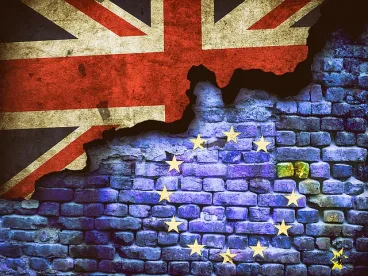Under Brexit, the UK is likely to leave the EU at the end of March 2019 – a development that will impact many global supply chains. Whether the UK will leave pursuant to an orderly arrangement, or whether it will leave without a deal is still unclear, and will likely remain unclear for the next several weeks and perhaps months. Even if the UK leaves the EU in an orderly manner, the nature of its future trading relationship with the EU will need to be determined in a relatively short period, and the product of those negotiations will form the basis of the UK’s future trading relationships with the rest of the world, including the United States.
Our colleagues have prepared a summary briefing analyzing the likely impacts of BREXIT. The key point is that, although there is likely to be short-term disruption, BREXIT is likely to give rise to a significant number of opportunities, including in supply chain operations, and it is important to anticipate these developments and plan for them now rather than later. For example, both the US and UK governments are now actively laying the groundwork for a new free trade agreement.
BRIEFING
Having served notice of its intention to leave the EU on 29 March 2017 under the so-called Article 50 procedure, the UK is currently scheduled to leave the EU on 29 March 2019, a date that is fewer than three months away.
There are essentially three possible short-term scenarios:
- The UK Parliament ratifies the Withdrawal Agreement concluded between the UK government and the EU, in which case, the UK enters a transition period, which will last until at least 31 December 2020
- The UK Parliament does not ratify the Withdrawal Agreement, in which case, the UK leaves the EU on 29 March 2019, and does not enter into a transition period
- The UK government requests an extension of the Article 50 period beyond 29 March 2019, or unilaterally revokes the Article 50 notification
The Withdrawal Agreement
The Withdrawal Agreement provides for the winding down of various current arrangements applying the EU legal order in the UK, including protection of EU citizens’ rights, payment by the UK of an amount in settlement of the UK’s commitments to the EU budget and – most controversially – the Irish “backstop”.
In respect of the backstop, the Withdrawal Agreement broadly provides that, in the absence of an alternative agreement regarding the future relationship between the UK and the EU by the end of the transition period, there would be a single customs territory between the EU and the whole of the UK, prohibiting all customs duties and quantitative restrictions between the UK and the EU, and taxes on imports in excess of those applying to similar domestic products. Northern Ireland will be subject to additional provisions: while it will remain part of the UK’s custom territory and VAT area, it will also fall within the EU’s regulatory union, and certain EU VAT and excise rules will apply in Northern Ireland with respect to the movement of cross-border trade in goods.
Neither the UK nor the EU is able unilaterally to terminate the backstop. This aspect of the Withdrawal Agreement, in particular, has become the focus of opposition in the UK among a number of Conservative and Democratic Unionist Party (a strongly pro-UK Northern Ireland party that the government relies on for its parliamentary majority) MPs. The fear is that the backstop may mean not only that after transition Northern Ireland may be treated differently from the rest of the UK, but also that the UK may be unable to negotiate independent trade deals with, for example, the US.
During the transition period, the EU will broadly treat the UK – and the UK will treat itself – as if it were a member state. The UK will effectively be part of the EU customs union and regulatory framework, subject to the jurisdiction of the Court of Justice, and will still be required to accept freedom of movement of citizens from other EU member states, but without any participation in EU decision-making. The EU will request that third countries also treat the UK as part of the EU for the purposes of their free trade and other agreements; it remains unclear to what extent those third countries will agree to do so. There may be some changes to international trade, even if the Withdrawal Agreement is ratified.
The Withdrawal Agreement does not, as a matter of law, conclude the future trading relationship between the UK and the EU. Instead, the parties have concluded a Political Declaration on the future relationship between the UK and the EU, establishing a general but non-binding direction of travel for future negotiations during a transition period. That Political Declaration is capable of providing the basis of a range of future trading relationships, from a customs union to a looser arrangement similar to the free trade agreement entered into between the EU and Canada.
The UK government postponed the intended parliamentary vote on the Withdrawal Agreement that was scheduled for 11 December 2018, on the basis that it would result in a heavy three-figure defeat, with more than 100 Conservative MPs expected to rebel, as well as the Democratic Unionist Party, the Labour Party and other minority parties. The government has confirmed that it intends to hold the vote again on 15 January 2019; there has been little evidence to date that sufficient numbers of MPs are now inclined to vote in favour.
Assuming, as seems likely, that Parliament rejects the Withdrawal Agreement on 15 January 2019, a range of different scenarios could play out. It is not impossible (and it may even be the government’s calculation) that, after Parliament has failed to agree on any alternative way forward, the government could bring the Withdrawal Agreement back to Parliament as the only alternative to the consequences of failure to ratify the Withdrawal Agreement.
No Ratification
If the UK fails to ratify the Withdrawal Agreement, it will leave the EU on 29 March 2019, will not enter into a transition period and will immediately be treated by the EU as a third country. It will, as a matter of law, cease to be subject to the rights and obligations under existing EU agreements, including free trade agreements. The UK would need to revert to the World Trade Organization (WTO) General Agreement on Tariffs and Trade to govern its trade in goods, and the General Agreement on Trade in Services to govern its trade in services. It remains unclear precisely how this would work in practice and whether the UK would be in a position immediately to apply WTO rules and tariffs on 30 March in relation to trade with the EU and other countries with which the EU has trade agreements. The UK government has been seeking to “roll-over” existing EU treaties with third countries so that they would, in effect, continue to apply with the UK after Brexit on a bilateral basis; media reports suggest that the UK has made limited progress towards this objective (there are 236 third country treaties, of which around 40 are free trade agreements).
Both the UK and the EU have issued guidance on what will happen if the UK leaves the EU without ratifying the Withdrawal Agreement, and both have made preparations. The UK has, for example, awarded contracts to private companies to run ferry services at additional ports, as it anticipates severe congestion around UK ports, particularly Dover, caused by additional border checks arising as a result of the UK becoming a third state. The concern is that without such measures, the UK could run out of food and medicine.
Precisely, how a “no-deal” Brexit would impact the UK and the EU is impossible to predict, as is the response of the UK government and the EU in the weeks and months following such an outcome. Should the UK leave the EU without ratifying the Withdrawal Agreement, the potential disruption to not only the UK and the EU, but also to other key global players such as the US, China, and Japan, should not be underestimated.
The ill will created between the EU and the UK (particularly if the UK government decides not to honour what it had previously accepted as UK financial obligations on leaving the EU) could complicate both the EU-UK relationship and the development of new UK relationships with other countries, including the US, for some years to come.
Extension to Article 50 Time Limit
If (as is currently likely), the UK Parliament rejects the Withdrawal Agreement, the default legal position is that the UK leaves the EU on 29 March as described herein. However, a very large majority in Parliament appears to be against this outcome. What could happen next is, therefore, highly unpredictable: the collapse of the May government and a general election cannot be ruled out. Equally, Parliament could form a majority around an alternative exit route (such as the EEA/EFTA “Norway +” option), or Parliament could refer the matter back to the electorate in another referendum. These alternatives would be very hard – probably impossible – to complete within the Article 50 time limit of 29 March 2019. In these circumstances, the UK could ask the EU to extend the Article 50 process. This can only be done by unanimous agreement of all 27 remaining EU member states. This will likely depend on whether the member states believe that they may either get a deal more favourable to the EU through a renewed negotiation, or stand a better chance of avoiding a “no-deal” Brexit, or even securing no Brexit at all.
No Brexit
Until 29 March 2019, the UK can unilaterally revoke its Article 50 notification and remain in the EU on its existing terms of membership. The UK could also request an extension of the Article 50 period, but this would require the consent of all 27 member states, and would likely involve questions as to the reason for the UK requesting an extension. In principle, the UK could unilaterally revoke its Article 50 notification during an extension period. It is not clear whether the UK government could unilaterally revoke its Article 50 notification without an Act of Parliament authorising it to do so. In practice, there is insufficient time before 29 March 2019 to introduce legislation for, and hold, a second referendum including an option on whether the UK should remain in the EU or not, and there is currently little appetite in the UK government or Parliament to legislate for one. As things currently stand, neither the UK government nor Parliament shows an inclination to revoke Article 50, or request an extension. If that sentiment persists following the vote on 15 January 2019, the choice for the UK Parliament is between the Withdrawal Agreement and a “no-deal” Brexit.






 />i
/>i
